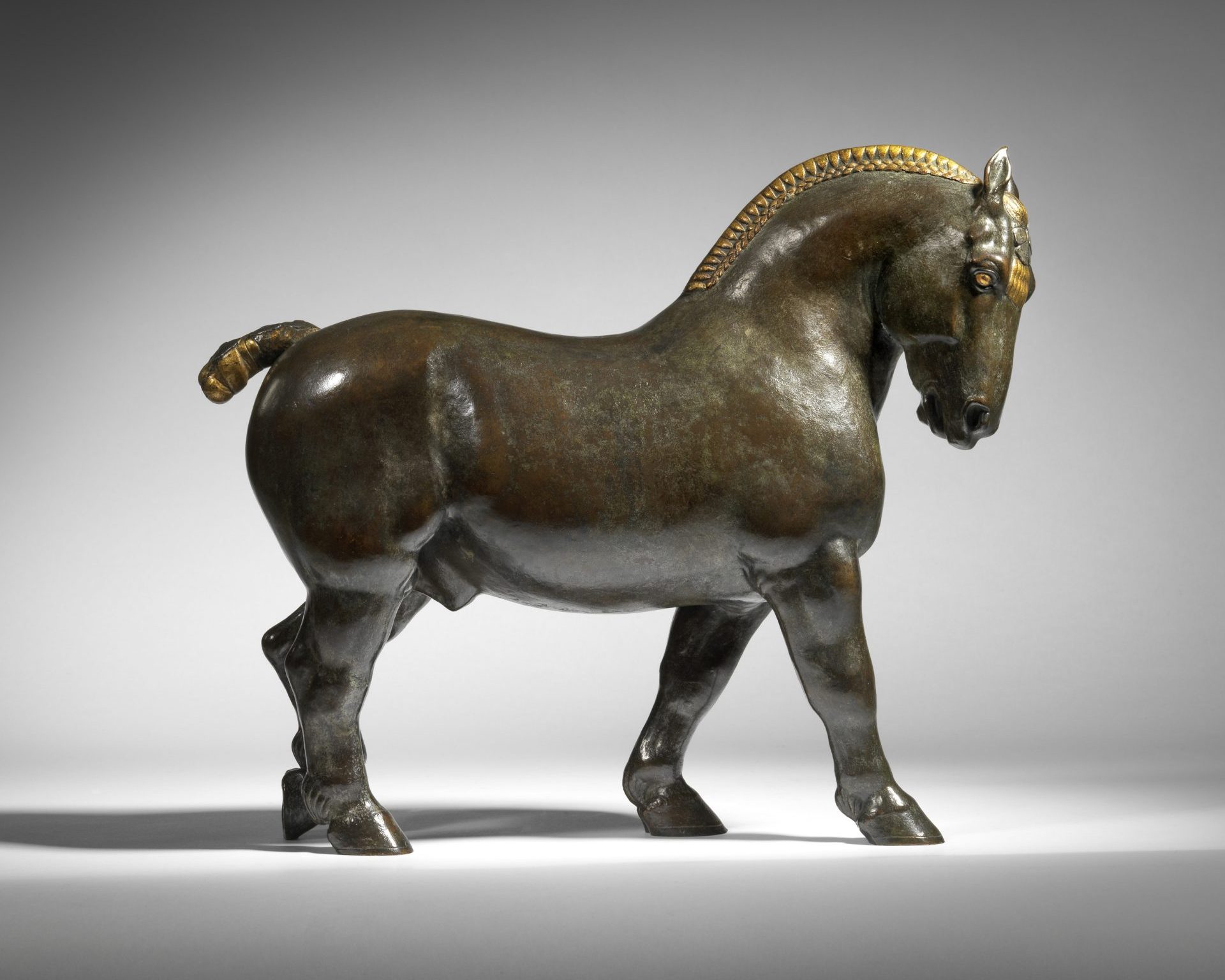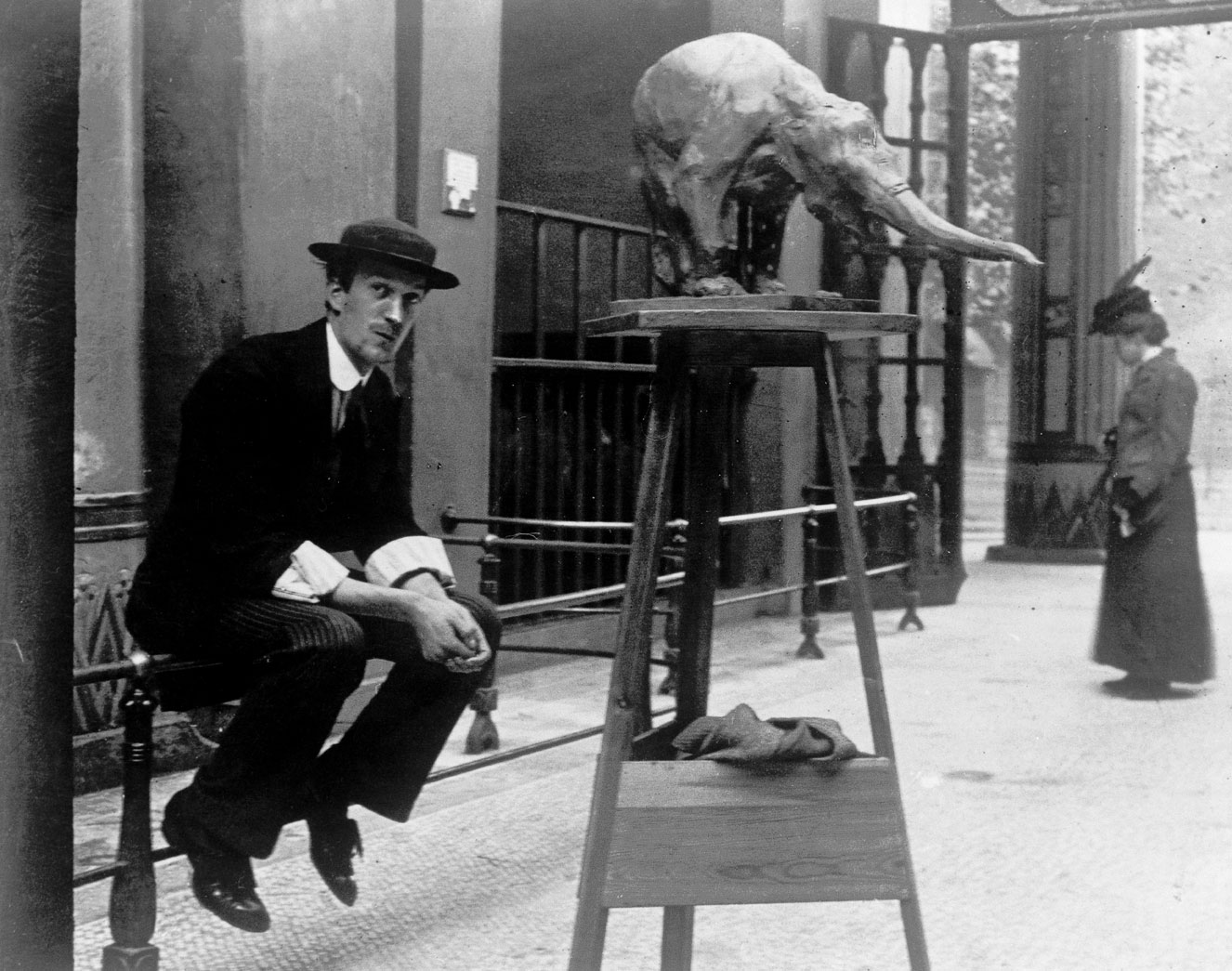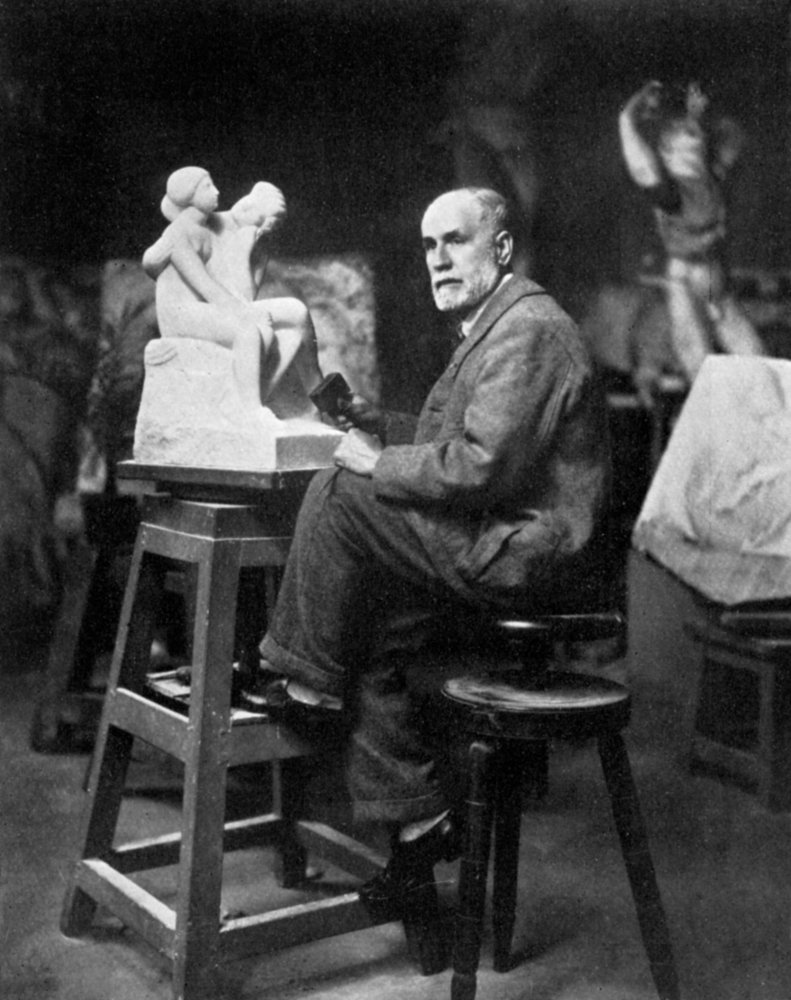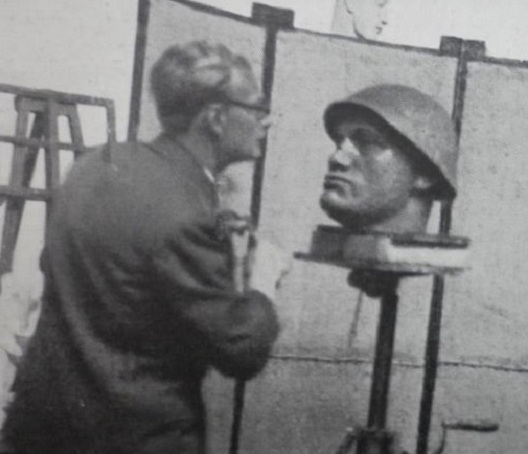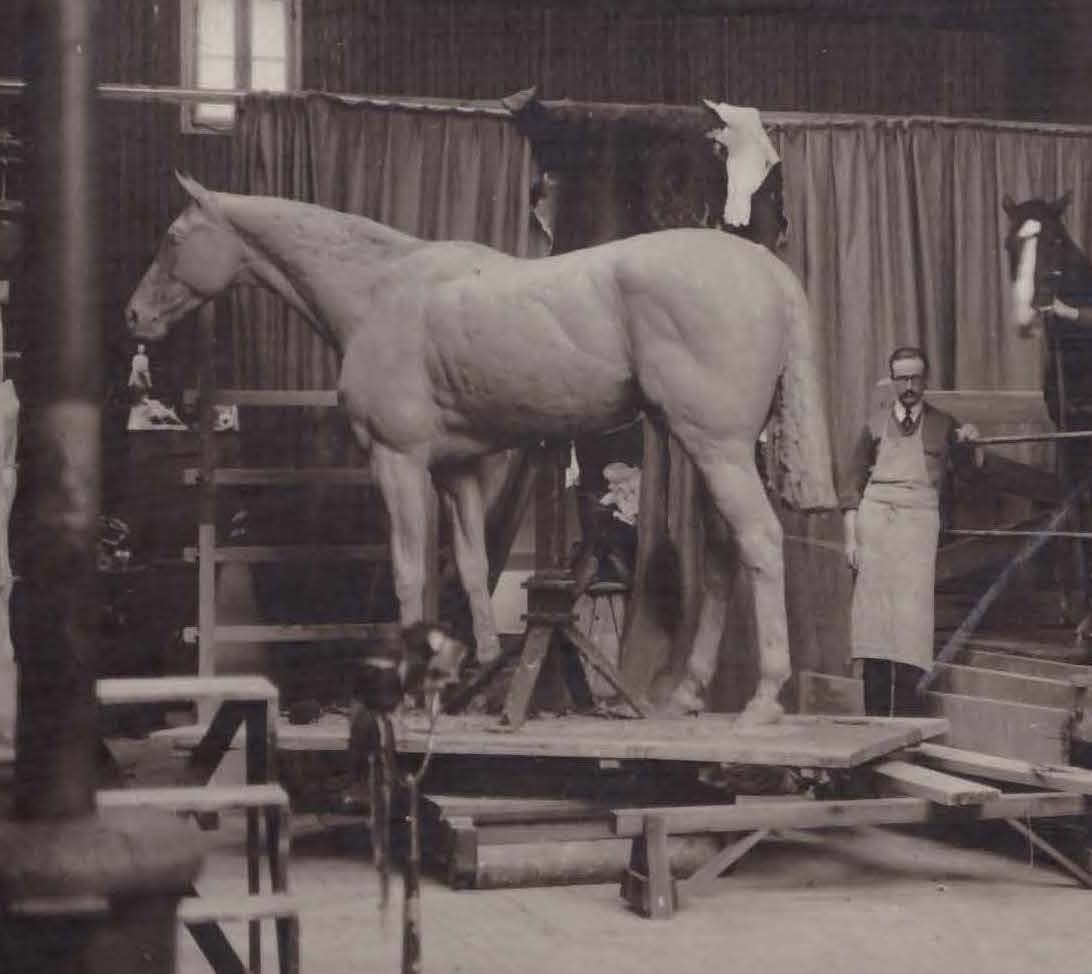2010, Exhibition
This exhibition features a selection of works drawn from our stock of important nineteenth and twentieth century sculpture.
A piece of note is ‘Mes Antilopes’ by Rembrandt Bugatti which is his only finished life-size work, measuring over two metres in length. Bugatti convinced the director of the Antwerp Zoo to have the two, live animals shipped to Paris, where they lived with Rembrandt Bugatti in his studio – a project which testifies to the great trust which the institution had for the artist. Bugatti was profoundly attached to the two antelopes and the work depicts the affection between the animals, who had endured a long journey, confined in a crate, and were reportedly unsettled for a while after their arrival in Paris. As is often evident in Bugatti’s work, he depicts the vulnerability of these animals, who contrast sharply with his own sense of loneliness.
Other bronzes of note are Joseph Bernard’s life-size Water Carrier, Herbert Haseltine’s Suffolk Punch Stallion and Ernest Meissonier’s Horseman in the Wind.
Artist Spotlight
Exhibition Catalogue
This annual exhibition catalogue features a selection of works drawn from our current stock of important nineteenth and twentieth century sculpture. Of particular note are the five unique sculptures by Rembrandt Bugatti, each one cast in just a single example. In addition, Mes Antilopes is his only completed life-size work, at over two metres in length. The financial situation over the last eighteen months has undoubtedly had an impact on the art market. Whatever its effect, at the Sladmore we prefer to stick to our long-standing commitment that buying the best always represents good value in the long term.
